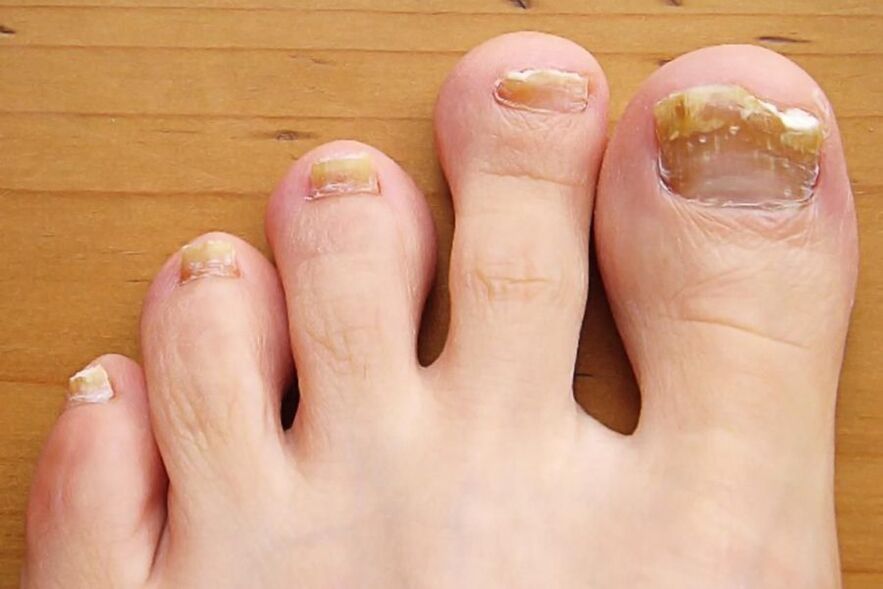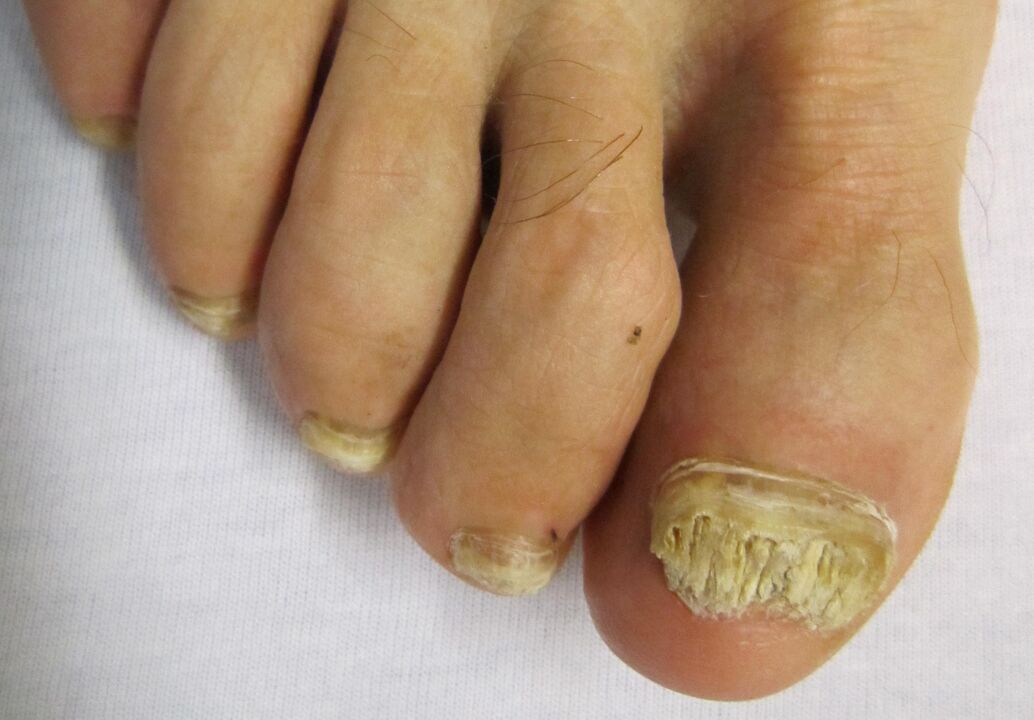Causes of disease and its symptoms

- Visit to saunas, showers and public swimming pools;
- Increased sweating of the feet;
- using someone else's shoes or hygiene products;
- Weak immunity, etc.
- Scale formation on the skin of feet and nails;
- Skin peeling and itching;
- cracks appear;
- Thickening of infected skin and nails;
- Changes in nail color;
- Destroys nail structure.
Forms and types of disease

- Depending on the penetration depth and location of the fungus;
- Thicken according to nail size;
- By pathogen type;
- By stage of development (early, second, advanced).
Classified by depth of penetration and location on the nail
- remote. This type of onychomycosis occurs on the very ends of the nails (free ones) and is characterized by a color change and the onset of delamination and destruction of the structure. Additionally, the spots begin to grow in size;
- side. The main signs are similar to the previous form, but the color of the nail changes on one or both sides of the nail;
- The surface is white. This form of fungus manifests itself in the appearance of several spots on the nail, eventually leading to its complete destruction;
- near end. The disease originates in the cuticle (inflammation) and gradually spreads throughout the nail, destroying it;
- Panonychia. The color of the entire nail plate changes, leading to faster damage.

Classification by size of nail thickening
- Normal nutritional form. With this form of the disease, separate lesions appear on the nail, which are slightly different in color. There is no change in the thickness of the nails;
- Hypertrophic type. The nails begin to thicken, change color, deform, and gradually collapse, making walking no longer so comfortable;
- Nail stripper. In this form, onychomycosis causes the nail layer to peel away from the finger, and if you delay treatment and let it get to this point, you don't have to think about saving the nail.
Classification by pathogen type
- Mold. This is one of the simplest forms of fungus because the mold cannot penetrate deep into the affected area. However, manifestations on the toenails are still possible. The main sign is the change in color, from black to green. Sometimes, spots of the same color may appear on the skin of your fingers. More than 5 types of molds;
- dermatophytes. There are 3 main pathogens that can cause more severe symptoms. Greyish-yellow streaks appear, nails fall off, and worse yet, this microorganism can infect the entire foot;
- yeast. This fungus is well known because it belongs to the genus Candida, which is also responsible for the development of oral thrush. Symptoms of infection with this fungus are characterized by loss of nail thickness, gray color, loss, damage to the fingers and inflammation.















